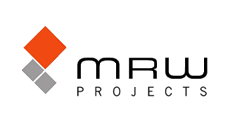Rental Agreement Making
Rental Agreement Making: Tips for a Smooth and Legal Process
As a landlord or property owner, crafting a rental agreement is an essential part of the leasing process. A rental agreement serves as a legal contract that outlines the terms and conditions of the rental property. It ensures that both the landlord and tenant understand their responsibilities and rights, setting clear boundaries that can help avoid disputes down the line.
Here are some tips on how to make a rental agreement that’s efficient, clear, and legally binding.
1. Know the Basics
A rental agreement should include the following key elements:
– Names and contact information of the tenant(s) and landlord.
– Property details, including the address and description of the rental unit.
– Rent amount, payment terms, and security deposit amount.
– Lease term, including the start and end date.
– Occupancy limits and whether pets are allowed.
– Rules and regulations regarding smoking, subleasing, noise restrictions, and other important matters.
– Signatures of both parties, indicating agreement to the terms.
2. Be Clear and Concise
Your rental agreement should be written in plain language that is easy for all parties to understand. Avoid legal jargon or ambiguous terms that could cause confusion or misinterpretation. Use bullet points and headings to break up sections and make the agreement more readable.
3. Adhere to Local Laws
Landlord-tenant laws vary from state to state, so it’s crucial to follow the regulations in your area. This includes adhering to rent control laws, security deposit limits, and other guidelines that may impact your rental agreement. Consult with a local attorney or real estate professional if you need help ensuring your agreement is legally compliant.
4. Customize Your Agreement
While there are many templates available online, it’s important to customize your rental agreement to fit the specific needs of your property and tenants. For example, if you’re renting out a furnished apartment, you may want to include a separate list of items included in the rental and their condition. Or, if you’re renting to college students, you may need to include special clauses related to parties or extra noise.
5. Consider Digital Signatures
In today’s digital age, signing a rental agreement in person can be inconvenient. Consider using an e-signature platform, such as DocuSign or Adobe Sign, to facilitate remote signing. This can save time and streamline the process for both the landlord and tenant.
Crafting a rental agreement may seem like a daunting task, but with the right information, it can be a smooth and straightforward process. By following these tips, you can create a legally binding agreement that protects both you and your tenants.
